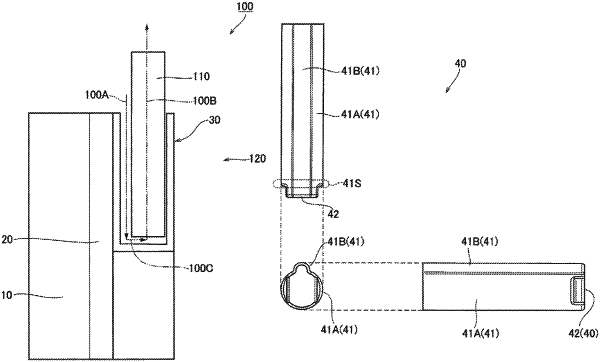| CPC A24F 40/42 (2020.01) [A24F 40/46 (2020.01); A24F 40/51 (2020.01); A24F 40/53 (2020.01); A24F 40/20 (2020.01)] | 20 Claims |

|
1. A container for a flavor inhaler and configured to contain a flavor generating article, comprising:
a bottom plate portion;
a temperature sensor disposed in the bottom plate portion and configured to detect a temperature change caused by a puffing action;
a cylindrical portion including a first portion which is configured to press the outer peripheral surface of the flavor generating article when the container contains the flavor generating article, wherein
a first channel is formed between at least a part of an outer peripheral surface of the flavor generating article and at least a part of an inner peripheral surface of the cylindrical portion of the container when the flavor generating article is contained in the container,
a third channel is formed between the distal end portion of the flavor generating article and the bottom plate portion when the flavor generating article is contained in the container,
the first channel is in communication with a second channel, the second channel extending inside the flavor generating article, through the third channel,
the second channel is supplied with only air that has passed through the first channel, and
the bottom plate portion is configured to close the end of the cylindrical portion.
|